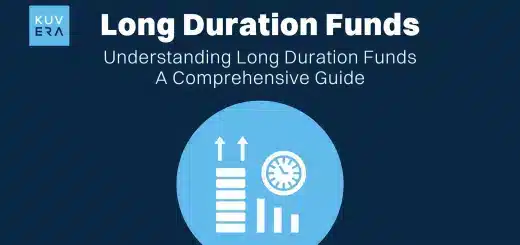Were you looking for microcap passive funds India on the Kuvera portal? How many funds did you discover? Just one, right? That is how new the world of microcap passive funds India is.
Passive investment India strategy is evolving gradually, year-on-year. There are new indices, portals for passive funds India and newer categories of passive funds launching. With this, the fascination of microcap index investing has evolved and a fund in this category was launched over the last one-year.
Let us explore more on microcap passive funds India, microcap index investing, the pros and cons of microcap investing in general, in detail.
A microcap index is a stock market index that tracks the performance of a specific group of micro-cap stocks. Microcap investing in India is a high-risk, potential high-reward strategy that involves investing in small-cap companies with a market capitalisation of less than a certain threshold. These companies are often relatively unknown, and their stocks can be highly volatile. However, they also offer the potential for significant returns, as these companies have the potential to grow rapidly and become future market leaders.
What Are Microcaps In India?
In India, a microcap stock is typically defined as a company with a market capitalisation between ₹500 crore and ₹1000 crore. However, this can vary depending on different classifications and market conditions.
It is important to note that the microcap category is constantly evolving, and the specific market capitalization range can change over time.
Microcap Index Funds in India: A Developing Landscape
While the concept of index investing is well-established in India, microcap index funds are a relatively new phenomenon in passive investment India. Unlike their larger-cap counterparts, microcap index passive funds India offer exposure to a diverse basket of small-cap stocks, potentially providing higher growth opportunities. However, they also come with increased risk due to the inherent volatility of these stocks.
Components and Sectors
Microcap indices typically include a wide range of companies across various sectors. However, the specific composition can vary depending on the index provider and its selection criteria. Some common sectors represented in microcap indices include:
1. Technology: Software, IT services, and other tech-related companies.
2. Healthcare: Pharmaceuticals, biotechnology, and medical devices.
3. Financials: Banks, insurance companies, and non-banking financial companies.
4. Consumer Discretionary: Retail, automobiles, and consumer durables.
5. Industrials: Manufacturing, construction, and engineering.
Benefits of Investing in Microcaps in India
Micro-cap stocks in India, while considered riskier due to their smaller size and less market visibility, offer significant potential for high returns. Here’s a breakdown of the benefits and why you should consider adding them to your investment portfolio:
1. High Growth Potential
– Smaller Market Cap, Bigger Growth Opportunities
Micro-cap companies, with their smaller market capitalization, have a higher potential for rapid growth compared to large-cap companies.
– Innovative Business Models
Many micro-cap companies are pioneers in emerging sectors, driving innovation and disruption.
– Strong Fundamentals
Despite their size, many micro-cap companies possess strong fundamentals, including robust financials, experienced management teams, and promising growth prospects.
2. Diversification
– Reducing Portfolio Risk
Investing in micro-cap stocks can diversify your portfolio, reducing overall risk.
– Uncorrelated Returns
Micro-cap stocks often exhibit low correlation with the broader market, providing a hedge against market fluctuations.
3. Early-Stage Investment Opportunities
– Identifying Future Multibaggers
Investing in micro-cap stocks allows you to identify and invest in potential multibaggers early on.
– Capturing Significant Upside
As these companies grow and mature, their stock prices can appreciate significantly, leading to substantial returns for early investors.
4. Potential for Outperformance
– Historical Performance
Historically, micro-cap stocks have outperformed large-cap and mid-cap stocks over longer time horizons.
– Higher Risk, Higher Reward
While the risk is higher, the potential reward is also significantly greater.
Risks Associated with Microcap Investing in India
While microcap index investing in India offers the potential for significant returns, it is essential to acknowledge the inherent risks:
1. High Volatility
– Price Fluctuations
Microcap stocks are often more volatile than larger-cap stocks, experiencing significant price swings in response to market news, economic indicators, and company-specific events.
– Market Sentiment
These stocks can be highly susceptible to market sentiment and investor psychology, leading to rapid price movements.
2. Liquidity Risk
– Limited Trading Volume
Microcap stocks often have lower trading volumes, making it difficult to buy or sell large quantities of shares without impacting the price.
– Wider Bid-Ask Spreads
This can result in higher transaction costs and potential losses.
3. Information Risk
– Limited Information
Microcap companies may not be as widely covered by analysts, making it difficult to obtain accurate and timely information about their financial performance and business prospects.
– Lack of Transparency
Some microcap companies may have lower levels of transparency, making it harder for investors to assess their true value.
4. Operational Risk
– Smaller Scale
Microcap companies are often smaller and less established, which can expose them to operational risks such as financial difficulties, management issues, and regulatory challenges.
– Dependency on Key Personnel
The success of these companies can be heavily reliant on a few key individuals, and any disruptions to their leadership can have significant implications.
5. Financial Risk
– Financial Stability
Microcap companies may have weaker financial positions compared to larger companies, making them more vulnerable to economic downturns and industry-specific challenges.
– Debt Burden
Some microcap companies may have higher levels of debt, which can increase their financial risk.
6. Regulatory Risk
– Regulatory Changes
Changes in government regulations, tax laws, or industry-specific regulations can have a significant impact on microcap companies.
To manage these risks, it is crucial to conduct thorough research, diversify your portfolio, and adopt a long-term investment horizon.
Microcap Index Funds in India
As of now, there aren’t many dedicated microcap index funds available in India. In fact, there is only one micro-cap index passive fund India at present. However, some multi-cap funds and small-cap funds may have significant exposure to micro-cap stocks. It’s important to carefully evaluate the fund’s portfolio to understand its allocation to micro-cap stocks.
Wrapping Up
Microcap index investing offers an opportunity to tap into the growth potential of small-cap companies. However, it is essential to understand the associated risks and conduct thorough research before making investment decisions. By carefully considering the factors discussed above, investors can make informed choices and potentially benefit from the long-term growth prospects of microcap stocks.
Interested in how we think about the markets?
Read more: Zen And The Art Of Investing
Watch here: Is UPI Killing the Toffee Business?












